Botox® Treatment for Armpits & Hyperhidrosis
Botox injections for axillary hyperhidrosis, excessive sweating of the armpits, has been described as a “life-changing” treatment by Dr. Green’s patients since they no longer have to deal with the embarrassment or discomfort caused by overactive sweat glands. It is currently estimated that almost five percent of individuals in the United States suffer from hyperhidrosis. Many patients are embarrassed to seek medical help for this common and treatable problem. Excessive sweating may be the result of a genetic predisposition, an overactive thyroid, anxiety, neurological conditions, or a side effect of certain medications. One of the most common areas of the body where patients experience excessive sweating is the armpits, but hyperhidrosis can also affect the palms of the hands, soles of the feet, head, and face.
Although sweating is an important body function for temperature regulation, overactive sweat glands that cause excessive sweating can have a huge negative impact on your quality of life. If you are one of the nearly 15 million Americans suffering from hyperhidrosis, your uncontrollable underarm sweating may cause you to feel too self-conscious to engage in some of your favorite activities or worried that your armpit sweat will permanently stain all of your clothing. In the past, patients largely relied on topical prescription antiperspirants alone to manage their hyperhidrosis. Now, thanks to the advent of Botox injections for hyperhidrosis, Dr. Green can help patients improve their overall quality of life with essentially zero downtime and minimal (if any), side effects.
Dr. Michele Green is an internationally renowned board-certified cosmetic dermatologist and was among the first in New York City to incorporate Botox injections into her private dermatology practice, located in the Upper East Side neighborhood of Manhattan. Castle Connolly, Super Doctors, and New York Magazine consistently identify Dr. Green as one of NYC’s best physicians for her expertise and artistry when it comes to non-invasive rejuvenation treatments, including what is described as the “best Botox in New York”. With over two and a half decades of experience providing her patients from around the globe with the best Botox and fillers, resurfacing laser treatments, CoolSculpting, and skin care, Dr. Green will work with you to create a personalized treatment approach that caters to your unique needs and goals.
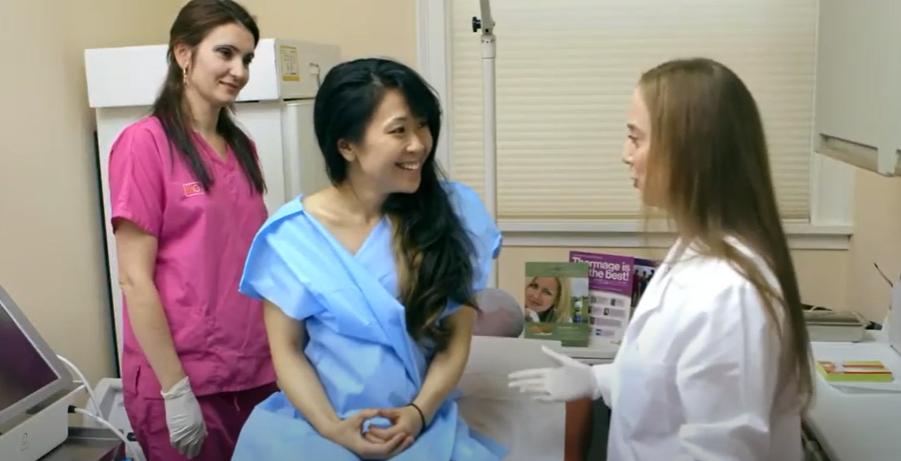
What is Hyperhidrosis?
Hyperhidrosis is a medical condition that can be characterized by an uncontrollable amount of excessive sweating that may be related to genetics, anxiety, neurological conditions, hyperthyroidism, hormonal imbalances, menopause, or a side effect of certain medications. Although sweating is an important and necessary bodily function for excreting toxins and regulating natural body temperature, hyperhidrosis may cause excessive sweating to occur at any time. Sweating is a normal reaction to being in a warm environment, exercising, or experiencing certain feelings such as stress or nervousness. In these situations, the sweat glands should secrete water and minerals to maintain a normal body temperature. Once removed from the situation, however, the sweat glands should receive a “stop” signal. In individuals with hyperhidrosis, the “stop” signal does not occur as it naturally should and excessive sweating is the result.
What causes hyperhidrosis?
There are two distinct types of hyperhidrosis that are believed to have different contributing factors. Primary hyperhidrosis entails overactive sweat glands in specific areas of the body, most commonly the armpits, hands, feet, face, and head. Primary hyperhidrosis may run in families and there is thought to be a genetic component to this condition.
Secondary hyperhidrosis is often a side effect of certain prescription medications or may be related to an underlying medical condition. Rather than experiencing excessive sweating in specific areas of the body, individuals with secondary hyperhidrosis have generalized sweating across their entire bodies. People with secondary hyperhidrosis may also sweat while they are sleeping. In cases such as these, it is important to seek medical advice from an experienced healthcare professional to determine the cause of your sweating. Medical conditions that are associated with secondary hyperhidrosis include infectious diseases such as malaria, tuberculosis, and HIV; neurologic conditions such as anxiety, stress, and panic attacks; as well as diabetic low blood sugar, heat exhaustion, and leukemia.
During your consultation with Dr. Michele Green at her private dermatology office, located in the Upper East Side neighborhood of Manhattan, you will have the opportunity to discuss with her in-depth regarding your specific skin concerns and overall goals. A thorough medical history will be collected prior to your hyperhidrosis treatment, and it is important that you disclose any potential underlying medical conditions to Dr. Green so that, together, you can determine the best treatment approach for you.
Botox for hyperhidrosis
While Botox treatment is the gold standard for treating fine lines and wrinkles that are caused by repetitive facial expressions, there are many FDA approved medical indications for Botox. Botox injections are used to successfully treat symptoms of temporomandibular joint (TMJ) disorders, cervical dystonia, and hyperhidrosis. In 2004, the U.S. Food and Drug Administration (FDA) approved Botulinum toxin (Botox) for the treatment of excessive underarm sweating, and it continues to be a sought-after procedure associated with few side effects and minimal downtime. Botox should always be injected by a board-certified medical professional with the experience and expertise required to safely and effectively perform the treatment, such as Dr. Michele Green in NYC. Dr. Green is an expert injector and offers her patients what has been described as the “best Botox injections in New York”, including Botox for hyperhidrosis.
How does Botox stop excessive underarm sweating?
Excessive sweating is a very common problem and affects the lives of many people regularly. For those suffering from it, this issue can be a truly significant problem that can impact a person’s self-confidence. For some who deal with severe underarm sweating, the embarrassment from excessive sweating can determine their lifestyle; it becomes the difference between what they choose to wear, and whether they even leave the house at all on a hot, humid day.
In the summer months when the temperature rises outside, the problem can be made much worse as your nervous system tries even harder to keep its body temperature at a normal level. Coupled with the fact that we tend to wear fewer clothes in hot weather, this can mean that any sweating that does occur is visibly more obvious since it cannot be ‘hidden’ under other layers of clothing. Add to that the daily face mask use due to the current Covid-19 pandemic, and the feelings of sweat and discomfort only get worse. In the past, there were few treatments, besides prescription antiperspirants. With the advent of Botox treatments, underarm sweating can be treated in just a few minutes and the treatment lasts 4 to 6 months.
Botox has a unique ability to treat hyperhidrosis due to its active ingredient, botulinum toxin, which is a neurotoxin that interacts with muscles and nerves. It is a popular cosmetic treatment when it comes to the appearance of fine lines and wrinkles due to its ability to “freeze” or limit muscle movement, thus relaxing the muscle and the lines that are caused by the overuse of facial muscles. To treat underarm sweating, Botox behaves similarly, but directs its attention to the nervous system: it blocks the nerves that are responsible for the activation of sweat glands. When Botox is injected by a board-certified dermatologist, like Dr. Michele Green, the overactive nerves become “frozen”, thus preventing the nerves from signaling sweat glands, so that you can finally stop sweating.
Botox is an FDA-approved approved treatment for excessive sweating that can be injected directly into the sweat glands to help block the release of acetylcholine. These injections, in simple terms, shut down the sweat glands that produce excessive sweating, which in turn effectively disables the sweating process in the location of the injection site.
One of the great things about using Botox to reduce hyperhidrosis is that, as a treatment, it is relatively long-lasting, helping to block excessive sweating for between four and six months. This means that for an individual who suffers from this issue more in the summer months, they can plan and time things to coincide with the upcoming summer heat. Additionally, patients can return to Dr. Green’s office every 6 to 12 months to repeat the procedure for continued dryness. You can discuss the treatment plan that reduces sweat and makes you feel comfortable for years to come.
How Social media popularized Botox for hyperhidrosis
Social media has become a part of life, and across various social media platforms, people are starting to talk more about Botox and its many benefits. Instagram, Facebook, YouTube, and other common social media platforms are filled with photos and explanations of Botox for cosmetic indications. Now, thanks to the popularity of social media platforms and Google, the relationship between managing symptoms of certain medical conditions (such as hyperhidrosis, bladder control, or migraines) and Botox injections are more commonly understood and patients have greater access to information about Botox treatment. Social media helps individuals to understand that they are not alone in dealing with issues such as excessive sweating, and with more representation of people treating conditions like hyperhidrosis with Botox being shown in the media and online, it is much easier to see just how effective this treatment can be.
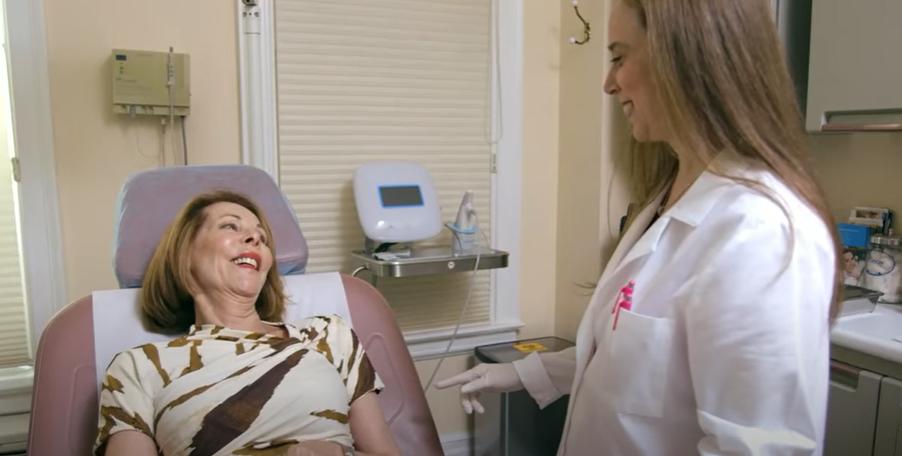
If it works for Chrissy Teigen, will it work for me?
Social media personality Chrissy Teigen was proud to admit it: she used Botox to treat her hyperhidrosis and was able to experience fresh, dry underarms that were truly newsworthy. Chrissy Teigen is one of 15 million Americans who suffer from excessive underarm sweating, and it can certainly be encouraging to see this condition normalized and discussed publicly. Additionally, Chrissy Teigen talked about getting treatment for hyperhidrosis with Botox injections, a process she was very grateful for. It has been shown that Botox for hyperhidrosis can reduce 82-87% of sweat in the underarms, greatly increasing the quality of life for those who suffer from excessive underarm sweating. You can reach out to Dr. Green to determine if this revolutionary method for treating severe underarm sweating is right for you too.
Does Botox really work for sweaty armpits?
Yes! When injected into a specific area such as the underarms, Botox is incredibly effective at reducing or eliminating sweat. Research shows that Botox is 82-87% effective in reducing underarm sweat in the treatment area according to sweathelp.org. However, it’s important to note that the sweat-free effects of the treatment will only occur at or near the injection site. If you are experiencing excessive sweat in multiple locations, such as the underarms, hands, feet, or face, Botox can help address and treat each of these areas of the body, which are being affected.
How effective is Botox for hyperhidrosis?
Botox treatment is extremely effective for hyperhidrosis and is considered to be the gold standard when it comes to controlling excessive sweating. Research shows that Botox is 82-87% effective in reducing underarm sweat and these results can show in as little as two weeks. If you have tried all sorts of over-the-counter and prescription topical antiperspirants, and other treatments to no avail, Botox injections may be exactly what you have been looking for.
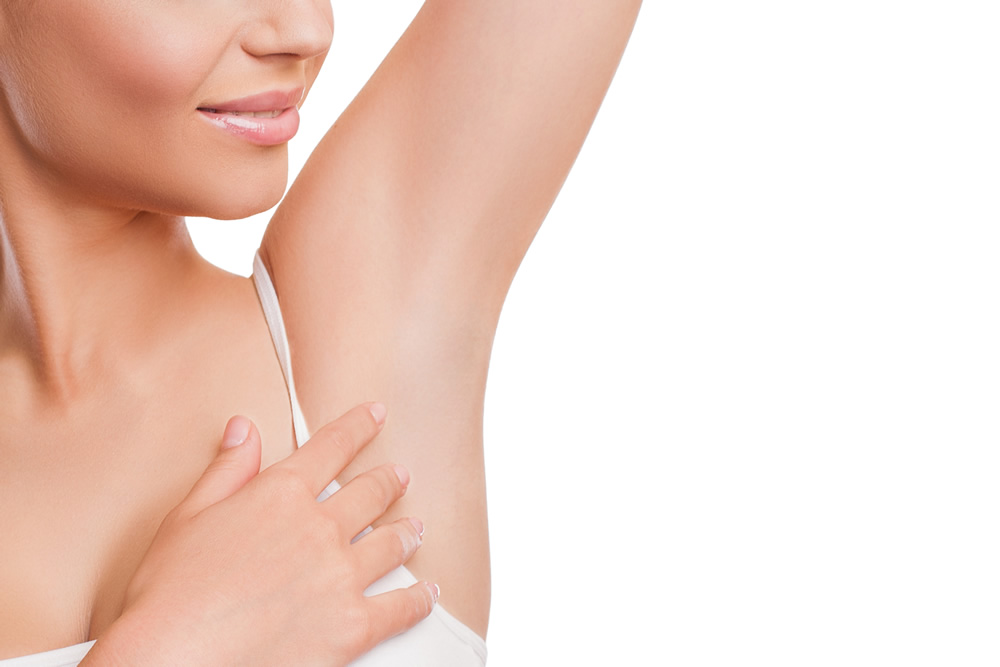
Can you get Botox to stop sweating? Is Botox in the armpits safe?
Yes! Underarm Botox injections is a completely safe procedure. Botox for axillary hyperhidrosis was approved by the FDA as a safe and effective treatment in 2004. Botox injections are far less invasive than surgical options and produce long-lasting results within two weeks of having treatment. There is essentially zero downtime associated with having underarm Botox injections for hyperhidrosis, and very few if any, potential side effects that patients may encounter. In order to guarantee that your Botox injections are performed in a safe and effective manner that produces optimal results, it is always recommended to have your treatment with a board-certified medical professional, such as Dr. Michele Green in NYC. As a board-certified dermatologist with over 25 years of experience providing her patients from around the globe with the best non-invasive treatment options available, Dr. Green will work with you to safely manage your excessive underarm sweating with Botox injections.
Side Effects of Botox Injections
There is no downtime after Botox treatment, and the process is rather painless. However, some common side effects of Botox include localized irritation or bruising. More serious side effects, which are extremely rare (occurring in fewer than 1% of patients), include muscle weakness, difficulty breathing, and trouble with bladder control. Due to these potential side effects, any Botox procedure must be done with a board-certified dermatologist or plastic surgeon. Dr. Green is an expert in Botox treatments and will prioritize your safety and goals in equal measure.
After your hyperhidrosis treatment, you’ll notice an improvement in your quality of life. You will be able to wear silk clothing again without being self-conscious about any sweat stains that people will notice. In all cases, your doctor will recommend a follow-up appointment 2-6 weeks later for any maintenance or injection of Botox that is needed. In extremely rare cases, some patients have reported compensatory sweating or increased sweating in other areas of the body. However, studies regarding compensatory sweating due to Botox for underarms are inconclusive at this point.
Because the effects of Botox are temporary, you will need future injections to keep up with your treatment. Of course, each case is different, and Dr. Green will work with you to discuss a treatment plan that best fits your needs. The bottom line: Botox injections are the best move for treating hyperhidrosis when prescription antiperspirants and/or over-the-counter antiperspirants fail to stop sweating from occurring.
Does Botox in the armpits hurt?
Botox is a safe and effective treatment for hyperhidrosis that is quick to perform and requires no downtime following the treatment. If you’re a first-time patient receiving Botox for your armpits, Dr. Michele Green recommends applying a topical numbing cream, to the area where you will have your Botox injections, one hour before the procedure to ease any discomfort. The process generally causes little to no pain, and the treatment is typically completed within ten minutes. A huge benefit of having this treatment is that it is fast to administer, and thus Botox truly is a ‘lunch-hour’ treatment. There is no downtime necessary following the treatment and you can resume your normal activities right after the procedure. Dr. Green advises patients not to participate in excessive or extreme physical activity, or take hot showers or baths, on the day of their Botox treatment.
Does Botox help underarm odor or stop smell?
A common concern for patients who suffer from excessive underarm sweating is the fear of sweat smell. Body odor can contribute to embarrassment or social anxiety and can keep those affected from living their lives to the fullest. When you sweat, the wet sweat mixes with bacteria that is found on the skin. When the liquid dries, an odor can arise from the area. Luckily, underarm Botox injections can stop or lessen the smell in the armpits. As Botox treatment can shut down sweat glands, it can reduce foul odors caused by sweat when it interacts with natural bacteria on the surface of the skin.
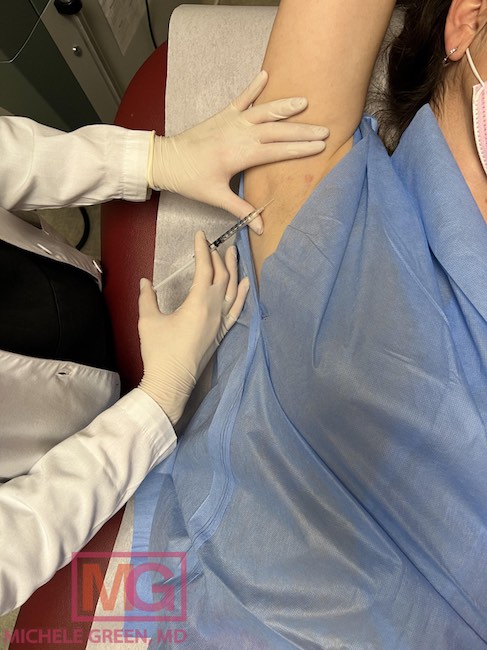
How is Botox injected into the armpits?
A medical professional will inject a small amount of Botox just under the skin’s surface with a small needle by your armpits. Botox will block the release of the neurotransmitter acetylcholine which is responsible for telling your sweat glands to produce sweat. Botox does this by essentially paralyzing the nerves in the area and preventing sweating solely in the specific area where it was injected. You should see the full effects of the treatment in as little as two to four days in the form of reduced sweat production and body odor.
How many units of Botox are needed for armpit sweating?
Each patient is different, which is why it is very important to consult with a board-certified dermatologist such as Dr. Green about your specific case and needs. As a standard reference point, Dr. Green recommends a dose of 50 units of Botox in each axilla (more commonly known as an armpit). More injections may potentially be required to cover the area sufficiently but vary on a per-patient basis. Two weeks following the first procedure, Dr. Green will schedule a follow-up appointment to check the treated area and provide a touch-up to the armpit area if needed.
Does health insurance cover Botox for hyperhidrosis?
As Botox is FDA-approved for the treatment of excessive sweating, certain insurance companies cover some aspects of treatment. If you’re dealing with axillary hyperhidrosis and you’ve attempted all other treatment options, including prescription deodorant, topical treatments, natural supplements, and oral medications, private insurance may cover your Botox treatment. Since each insurance company has its own separate rules and regulations, it is best to check directly with your health plan.
How long will it take until I see any results?
Once the injections have taken place, the results are very fast-acting. Botox will provide relief from sweating (in the area that was treated) within a few days after the procedure is performed, typically between 4 and 6 days. While it is not a permanent cure for excessive sweating, it can be used to help mitigate the issue and manage it more effectively for a significant period. The dryness from underarm Botox typically lasts for 4-6 months from your injection. After that time, you can return to Dr. Green to receive the treatment again.
How long does Botox last for hyperhidrosis?
Botox for hyperhidrosis typically lasts for four to six months but can last longer for some individuals. It is recommended that you repeat this treatment about every six months to maintain the effects. Results after the injection are almost immediate and can kick in in as little as two to four days. Once you get the treatment done, you will feel more confident and will regret not getting it sooner.
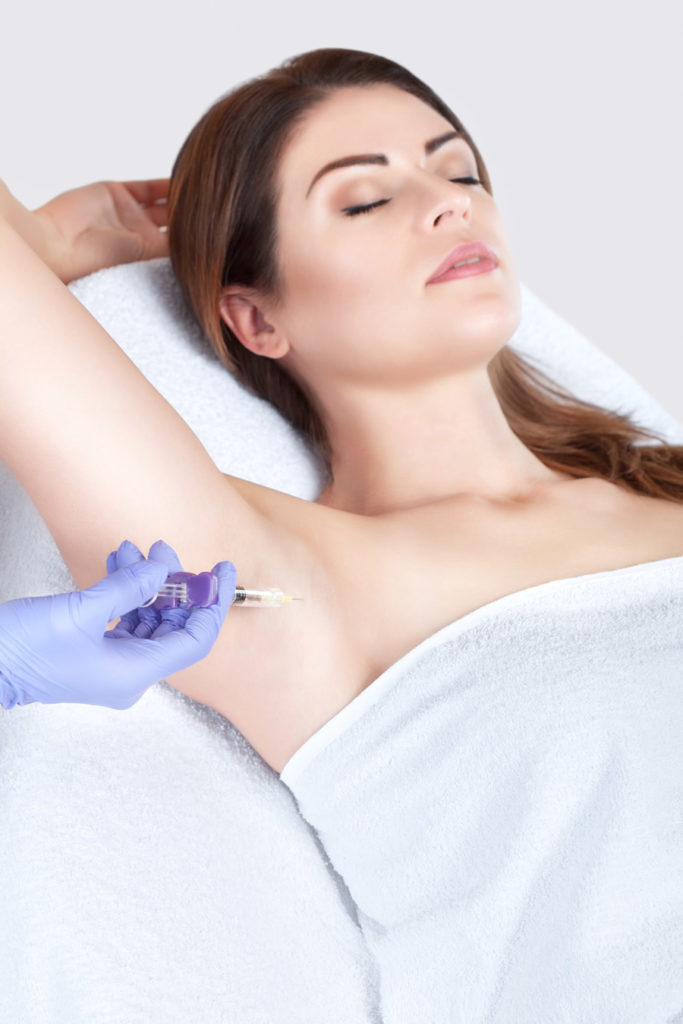
Can you shower after having Botox in the armpits?
No, you should avoid showering during the day of your procedure and for at least 12 hours following your treatment. You should avoid hot water, using deodorant, and doing any heavy exercise as these activities all increase your risk of bruising. The best practice is to gently clean your armpits with a mild cleanser and some lukewarm water after the first 12 hours following the procedure.
Alternative treatments for hyperhidrosis
There are several treatments for excessive sweating on the market, including specialized antiperspirant deodorants such as Drysol, which can be helpful. Drysol is a topical medication, which Dr. Green can prescribe, which contains aluminum chloride hexahydrate. In short, Drysol is a prescription-strength type of aluminum chloride. Drysol is applied nightly 2 to 3 nights consecutively, then once a week to maintain the effects and improve your condition. Prescription antiperspirants, such as Drysol, can be applied before bedtime and then washed off in the morning, being careful to avoid the eye area. For many patients, prescription antiperspirants are helpful, but for many others, they do not come close to solving the problem.
Oral medications can also be used to address excessive sweating that occurs due to secondary generalized hyperhidrosis, meaning severe sweating that occurs over a large part of the body rather than in a specific location like the armpits, hands, or feet. Oral medications, such as anticholinergics, work by affecting the nervous system to block the stimulation of the sweat glands, which will reduce sweating throughout the entire body. One such medication is glycopyrrolate (Rubinul). Many side effects are associated with oral medications, like Rubinul. Patients may experience systemic side effects such as dry mouth, constipation, impaired taste, blurred vision, heart palpitations, and reduced bladder function. For patients who are concerned about the wide-ranging potential side effects of oral medication, Botox injections to combat hyperhidrosis can be the best option.
MiraDry treatment for hyperhidrosis
MiraDry is a radiofrequency (RF) system designed to permanently eliminate sweat glands via a process known as thermolysis after 1-2 treatments to get rid of the odor and sweating in the armpit. The treatment involves the use of a handheld device that sends out electromagnetic energy to the specific region of underarm skin that is being targeted and removes the sweat glands. There are a few common side effects that occur after the procedure such as swelling in the armpit, redness, and tenderness that will last for a couple of days. Some patients find that while at first their underarm remains 100% dry directly following the treatment, in 2-3 weeks, sweating may resume. For most patients, however, the MiraDry treatment is long-lasting and may only require 2 follow-up treatments before becoming fully effective. When you work with Dr. Green, she will begin by reviewing your medical history and current condition to determine which treatment is right for you.
Glycopyrronium tosylate treatment for hyperhidrosis
Glycopyrronium tosylate (often known as Qbrexza) is a topical wipe prescribed for excessive underarm sweating. The wipe is used once per day on both underarms and helps reduce a person’s sweat production by blocking the activation of acetylcholine receptors in peripheral sweat glands.
What is the procedure like for having Botox injections for hyperhidrosis?
When you know you are interested in getting Botox treatment for hyperhidrosis, it is important to make an appointment with a board-certified dermatologist. You’ll begin by consulting with Dr. Green and letting her know about any medical conditions or medications that you take. Disclosing this information can aid in lowering the risk of side effects. Before the procedure, it is important to note that patients should not shave their armpits for two days before the Botox treatment.
When you arrive for your appointment at the NYC office of Dr. Michele Green, you can expect that the procedure itself will not take long – typically around ten minutes. Dr. Green will prescribe a topical numbing cream that you will apply to the skin, at the injection site, one hour before performing the procedure to help reduce any discomfort or pain. Dr. Green will then inject Botox (also known as onabotulinumtoxinA) in a grid pattern in the armpits with each injection being about one centimeter apart.
There is no recovery time following the procedure, meaning you can resume your normal activities once you are done. Experienced healthcare professionals, like Dr. Green, recommend that patients do not exercise or take hot baths and showers on the first day after the procedure. You will start to see the effects of the Botox treatment in 2-4 days after the injections. Medical professionals, like Dr. Michele Green, will schedule a follow-up visit with you two weeks after your Botox treatment to assess the treatment area and provide any touch-ups if necessary. Your armpits should stay dry for four to six months after the procedure before you need to return to Dr. Green’s office to have the Botox treatment again.
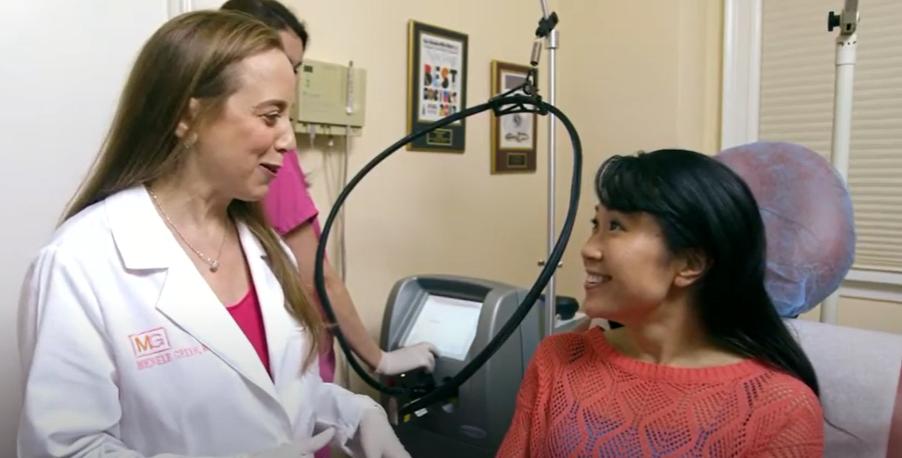
Can Botox be used in other areas of the body to treat excessive sweating?
Yes! Botox can be used to treat excessive sweating in the palms of the hands, the soles of the feet, the head, and the face. Botox can effectively treat hyperhidrosis in other areas of the body via the same mechanisms by which it treats underarm sweating. Dr. Green often utilizes Botox to treat patients struggling with palmar hyperhidrosis and finds the effects can last for up to six months in duration. Clinical studies have shown that it can reduce more than 75% of palmar hyperhidrosis with a single treatment and is extremely effective. The best first step in having Botox for hyperhidrosis is consulting with Dr. Michele Green.
Can I get Botox hyperhidrosis for my hands?
Suffering from excessive sweating in your hands, a condition that is also known as palmar hyperhidrosis can be very stressful and embarrassing. Many patients with palmar hyperhidrosis try to stay away from shaking hands to avoid having to explain slippery palms and live in fear of damp hands ruining paperwork. The condition can affect their social lives and career. If clinical-strength antiperspirants do not work to decrease excessive sweating in the palms, patients can turn to Botox for relief. It is important to begin by consulting with a medical professional such as board-certified dermatologist Dr. Michele Green in New York.
You will begin the treatment process by meeting with Dr. Green to discuss your specific condition to determine if Botox is the best treatment for you. Dr. Green will then inject your palms with Botox, which will block the chemical messengers of the body that secrete sweat. Injections in the hands can be more painful than in the armpits so Dr. Green will apply a topical numbing cream to reduce discomfort. There may be some pain and weakness in the hands following the procedure that should go away on its own a few days after your Botox injection. Botox is extremely effective in reducing sweat on the palms and can last up to 6 months. The treatment can then be repeated for continued dryness.
Can I get Botox for hyperhidrosis on my face?
Not only can hyperhidrosis affect the underarms, but excessive sweating can also occur on the face, head, and scalp. If you suffer from craniofacial hyperhidrosis, you may commonly experience sweat dripping down your face in all sorts of situations- such as while you are just sitting at your desk to work or in various social situations. Excessive sweating can have a dramatically negative impact on the quality of life of those who suffer from it. Many patients with hyperhidrosis may avoid work or social functions due to the potential frustration or embarrassment associated with their excessive sweating.
If prescription antiperspirants are too irritating to the skin or just aren’t effective in keeping facial sweat at bay, Botox treatment is a great option for reducing severe sweating on the head and face. OnabotulinumtoxinA injections, more commonly known as Botox, should always be done by a medical professional or board-certified dermatologist such as Dr. Green. Dr. Green will administer your Botox injections to the area or areas of the face that secrete the most sweat. Botox will block the neurotransmitters that send the message to release excess sweat on that part of the face, effectively managing hyperhidrosis.
Potential side effects of Botox injections for the prevention of excessive sweating of the face may include swelling and bruising. Rarely, patients may experience some asymmetry on the forehead as a result of their Botox treatment. The asymmetry can be balanced with additional Botox injections if this side effect were to occur. Properly injecting Botox for reducing facial hyperhidrosis requires precision and a strong knowledge of facial anatomy. The likelihood of experiencing unwanted potential side effects is greatly reduced when you seek treatment with a board-certified cosmetic dermatologist with extensive experience performing these types of Botox injections. Dr. Michele Green in NYC is an Allergan Platinum injector of Botox with decades of experience providing what is described as the “best Botox in New York”. When you consult with Dr. Green for your Botox treatment, she will work with you to determine a customized approach that is catered to your unique needs and goals and produces optimal results.
How do Botox armpit injections stop sweating?
The process of having underarm Botox injections for severe underarm sweating is simple and straightforward. Botox is safe, effective, and highly effective in treating and preventing excessive sweating. OnabotulinumtoxinA, more commonly known by the brand name Botox, is FDA approved for treating medical conditions such as hyperhidrosis. When Botox injections are used to treat underarm sweating, it has been shown to cause an 82-87% decrease in sweating. OnabotulinumtoxinA is a purified, natural protein that is injected into the skin by a board-certified dermatologist. The protein in Botox will block the neurotransmitter that sends the message to the nervous system to activate the sweat glands. When this chemical messenger is interrupted by onabotulinumtoxinA, sweating in the area is effectively “turned off.” The effects of Botox treatment last from 4 to 6 months and provide relief from excessive sweating in the armpits. The process is safe and effective in decreasing severe underarm sweating, which helps to improve quality of life and gives patients confidence to go about their days without having to worry about the embarrassment of sweating through their clothes.
What is the effect of Botox on sweat glands?
It’s important to note that while sweating is important for the body to regulate temperature, the armpits have only a small percentage of the body’s sweat glands (less than 2%). For that reason, blocking the neurotransmitters in the underarms has no significant effect on temperature regulation in the body. Botox works to suppress the chemical messaging that causes excess sweat to secrete from the sweat glands. Underarm Botox treatment is not removing the sweat glands but rather keeps them from fully functioning. The effect is not permanent and will subside 4 to 6 months after receiving the treatment. Additionally, researchers have found that after the Botox injections, the other parts of the body do not compensate for the lack of sweat in the armpits meaning you will likely not experience excessive sweating anywhere else.
Can Botox injections in the armpits cause cancer?
No, Botox injections have not been linked to cancer in any way. There is no evidence that Botox causes cancer. Underarm Botox injections are approved by the U.S. Food and Drug Administration for excessive sweating. The health and wellness experts who administer Botox injections for hyperhidrosis are providing a safe and effective treatment for the management of the condition. There are minimal, if any, side effects that are associated with Botox treatment. The most common side effects include a mild amount of swelling, tenderness, and bruising, which typically resolve on their own within several days of treatment.
How much is it to get Botox in your armpits?
The total cost of Botox injections for excessive underarm sweating will be dependent on a number of contributing factors including the geographic location of the office in which you are treated, the experience level of the provider performing your treatment, and the amount of Botox needed for your treatment. Having Botox injections in a medical spa setting with a nurse injector may be more inexpensive than with a healthcare professional such as a board-certified cosmetic dermatologist and expert injector. However, it is incredibly important to research the qualifications and experience level of your injector before having Botox injections in order to guarantee that your treatment is performed safely and produces ideal results. When you consult with Dr. Michele Green in New York City for your Botox injections, you’ll have the opportunity to discuss with her in-depth regarding your specific skin concerns and goals. She will then work with you to establish a treatment plan that is catered to your needs and the total cost of Botox will be determined.
How do I get started with Botox injections for hyperhidrosis?
Hyperhidrosis can be a source of great frustration and, for many, excessive sweating can negatively impact their quality of life. Luckily, there are hyperhidrosis treatment options other than prescription antiperspirants that can help. If you are struggling with excessive sweating of the underarms or other areas of the body that are prone to hyperhidrosis such as the hands and feet, you can benefit from consulting with a board-certified healthcare professional, such as Dr. Green, regarding Botox injections.
Dr. Michele Green in New York City is an Allergan platinum injector of Botox with over two and a half decades of experience providing what is described as the “best Botox injections in New York”. Dr. Green is an internationally renowned board-certified cosmetic dermatologist and was among the first in New York to offer Botox injections for the treatment of axillary hyperhidrosis (excessive underarm sweating). Her dedication to her expertise is well-exemplified by the fact that Castle Connolly, Super Doctors, New York Magazine, and the New York Times consistently identify Dr. Green as one of the best dermatologists in New York City. Embracing a ‘less is more’ philosophy and taking a holistic approach when it comes to rejuvenation treatments, Dr. Green works with each of her patients individually to create a personalized treatment plan that is best suited to their unique needs and goals. To schedule a consultation with Dr. Green at her private dermatology office in the Upper East Side neighborhood of Manhattan, contact us online today or call the office at 212-535-3088.
 212-535-3088
212-535-3088